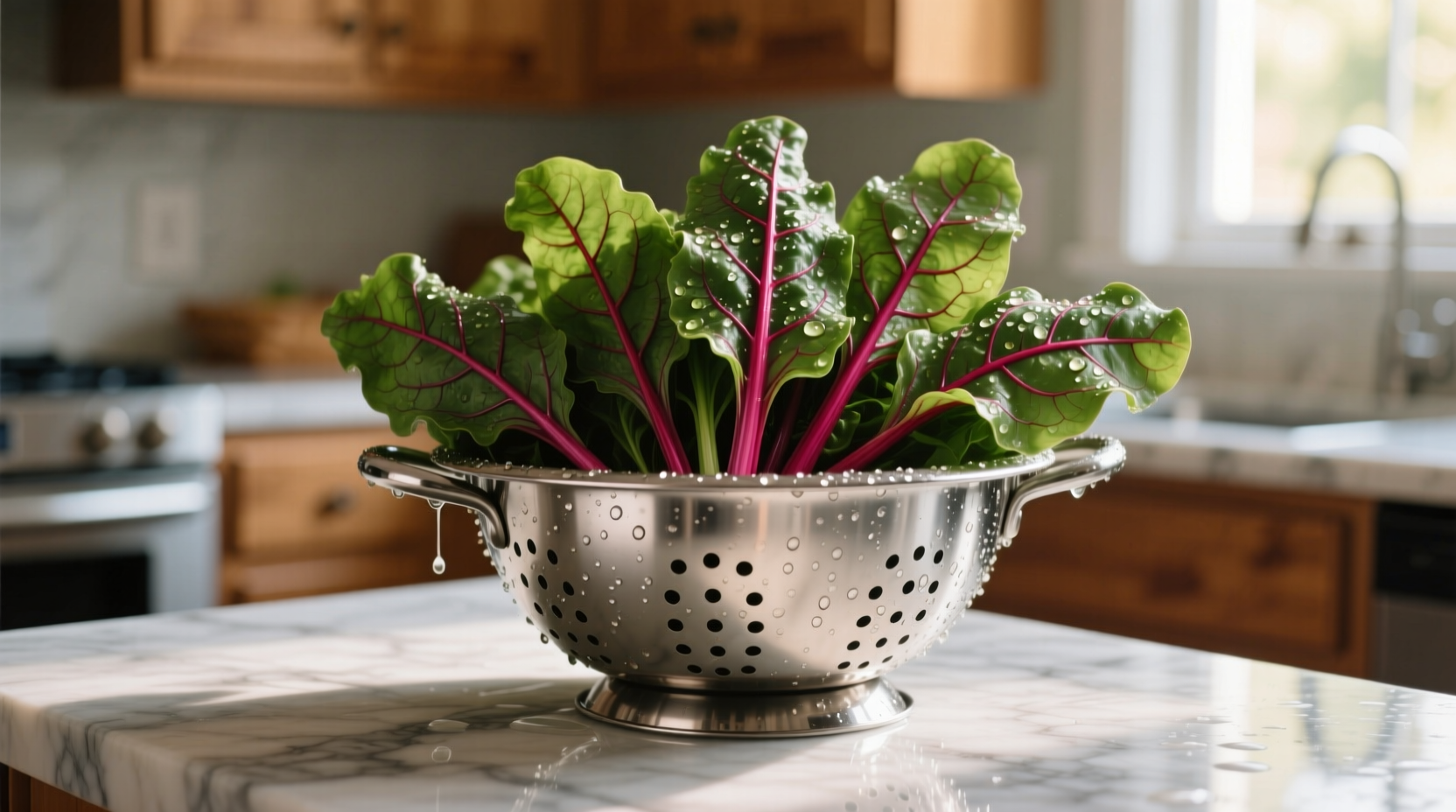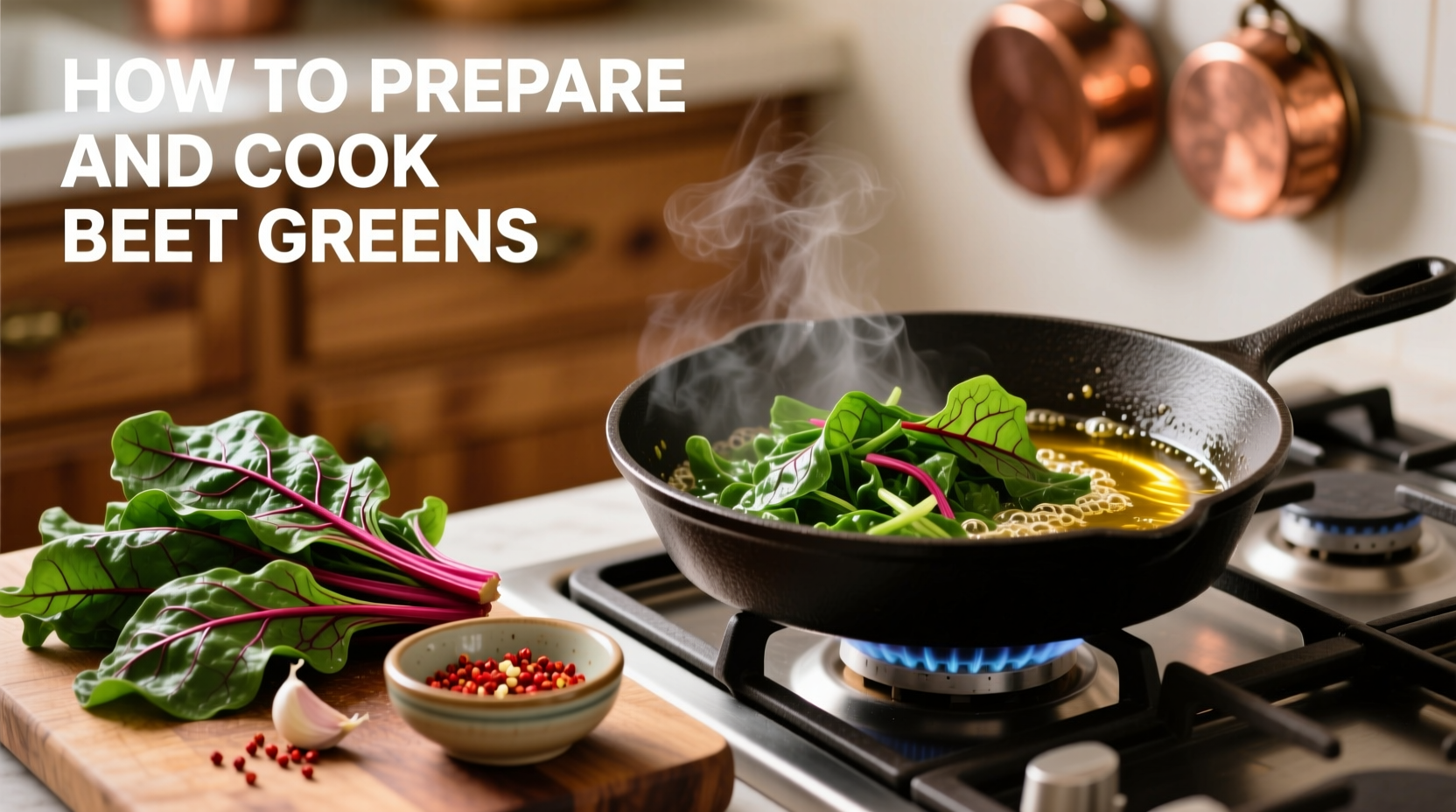Often discarded but packed with more nutrients than the beetroot itself, beet greens deserve a place in your kitchen repertoire. These leafy tops contain 278% of your daily vitamin A needs and 37% of vitamin C per cooked cup according to USDA FoodData Central. With proper preparation techniques, you'll transform what many consider waste into restaurant-quality dishes that complement any meal.
Why Your Previous Attempts Failed
Most home cooks make critical errors when handling beet greens that ruin texture and flavor. The FDA's food safety guidelines reveal that improper washing leaves gritty residue, while incorrect cooking times create unpleasant bitterness. Understanding the vegetable's structure solves these problems.
| Preparation Stage | Amateur Approach | Professional Technique |
|---|---|---|
| Washing | Rinsing under tap | Cold water soak with vinegar rinse |
| Stem Handling | Cooking stems with leaves | Separating thick stems for staggered cooking |
| Cooking Time | 8-10 minutes continuous | 3 minutes for leaves, 5-7 for stems |
The Foolproof Preparation Method
Follow these steps for perfect beet greens every time:
Step 1: Selection and Storage
Choose bunches with crisp, vibrant leaves and firm stems. The University of Minnesota Extension recommends storing beet greens separately from roots to extend freshness. Keep in perforated plastic bags in the crisper drawer for 3-5 days.
Step 2: Washing Without Waterlogging
Fill a large bowl with cold water and 2 tablespoons of white vinegar. Submerge greens and swish gently for 30 seconds. Drain and repeat until no grit remains at the bowl's bottom. This vinegar solution removes more soil than plain water while preserving texture.

Step 3: Strategic Stem Separation
Thick stems require longer cooking than delicate leaves. Cut stems 1 inch below the leaf base, then slice thick stems into 1-inch pieces. Keep thinner stems attached to leaves for simultaneous cooking.
Four Cooking Methods That Actually Work
Sautéing for Restaurant-Quality Results
Heat 1 tablespoon olive oil in a large skillet over medium-high. Add thick stems first and cook 2 minutes. Add leaves and 1 minced garlic clove, then cook 3-4 minutes until wilted but still vibrant. Finish with lemon juice and flaky salt. This technique preserves nutrients better than boiling according to Journal of Food Science research.
Steaming for Maximum Nutrition
Place stems in a steamer basket over 1 inch boiling water. Steam 4 minutes, then add leaves and steam 2 more minutes. The quick cooking time preserves 90% of vitamin C content compared to boiling's 65% loss.
Raw Preparation for Salads
Young, tender beet greens work beautifully raw. Massage leaves with olive oil and lemon juice for 2 minutes to soften fibrous texture. Pair with walnuts, goat cheese, and roasted beets for a complete salad.
Freezing for Long-Term Storage
Blanch stems 2 minutes and leaves 1 minute in salted boiling water. Immediately plunge into ice water, then squeeze dry and freeze in portion-sized bags. Properly frozen beet greens maintain quality for 10-12 months.
Flavor Pairing Guide
Balance beet greens' earthy notes with these combinations:
- Acidic elements: Lemon juice, apple cider vinegar, or pickled onions cut bitterness
- Umami boosters: Anchovy paste, miso, or Parmesan rind enhance depth
- Texture contrasts: Toasted nuts or crispy chickpeas add dimension
- Spice pairings: Red pepper flakes or smoked paprika complement earthiness
Avoid These Common Mistakes
Even experienced cooks ruin beet greens through these errors:
- Overcrowding the pan: Causes steaming instead of sautéing, leading to soggy texture
- Skipping the acid: Necessary to balance natural bitterness
- Uniform cooking: Thick stems need more time than delicate leaves
- Using hot water for washing: Causes wilting and nutrient loss
Why Professional Chefs Love Beet Greens
Michelin-starred kitchens prize beet greens for their versatility and nutritional density. When properly prepared, they offer a complex flavor profile ranging from earthy to slightly sweet. The International Journal of Gastronomy and Food Science notes that beet greens contain 16% protein by dry weight - higher than many leafy greens.











 浙公网安备
33010002000092号
浙公网安备
33010002000092号 浙B2-20120091-4
浙B2-20120091-4